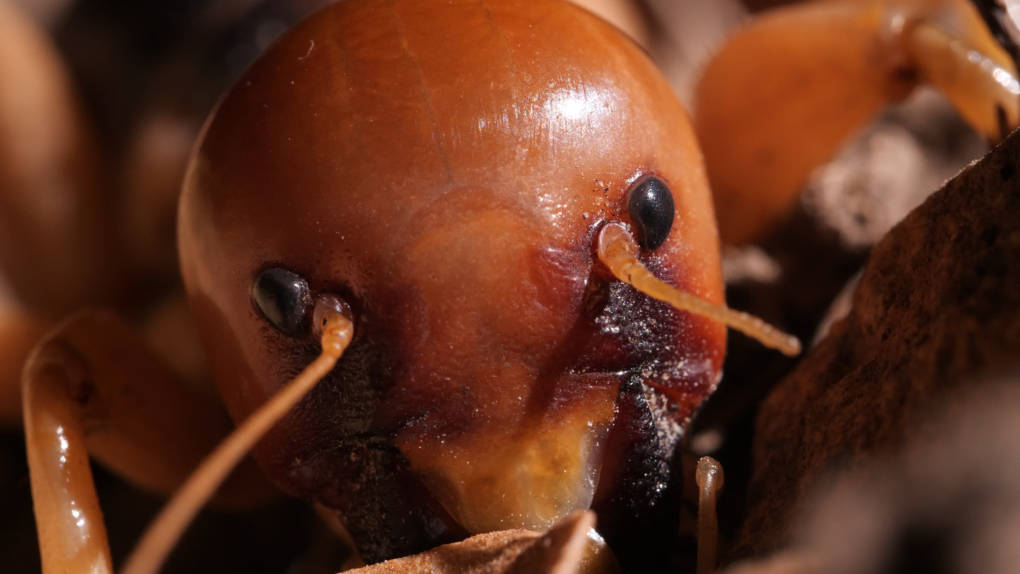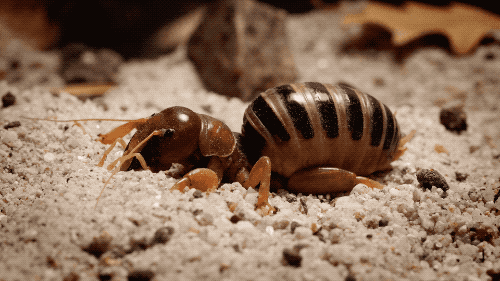Jerusalem Crickets Only Date Drummers
Potato Bug. Child of the Earth. Old Bald-Headed Man. Skull Insects. Devil’s Baby. Spawn of Satan. There’s a fairly long list of imaginative nicknames that refer to Jerusalem crickets, those six-legged insects with eerily humanlike faces and prominent striped abdomens. And they can get quite large, too: Some measure over 3 inches long and weigh more than a mouse, so they can be quite unnerving if you see them crawling around in your backyard in summertime.

One individual who finds them compelling, and not creepy, has been studying Jerusalem crickets for over 40 years: David Weissman, a research associate in entomology affiliated with the California Academy of Sciences in San Francisco. He’s now considered the world’s foremost expert, since no one else has been as captivated or singlemindedly devoted to learning more about them.

“In the past, entomologists have focused on insects that are out in the daytime — beetles, butterflies — that are pretty and easier to collect,” Weissman says. “I think it’s great spending the night out collecting bugs, but most people don’t.”
Splitting his time between his career as an entomologist and anesthesiologist, which helped support his field work, he didn’t think it would be that difficult to catalog all the different species of Jerusalem crickets. But now he’s planning on publishing a paper in the next two years that will name and describe more than 60 species, which aren’t actually true crickets although they’re somewhat related. And they’re primarily found in the western United States, Mexico and Central America — not Jerusalem.
“People have asked me, ‘Why don’t you go to the tropics for field work?’ ” says Weissman. “And I’ve been there. It’s wonderful, but it’s overwhelming, too. There’s so much there. And why go to tropics when you have such neat problems in your own backyard?”

While much of their general behavior is still not widely understood, Jerusalem crickets typically live solitary lives underground. They’ll emerge at night to scavenge for roots, tubers and smaller insects for their meals. And it’s also when they come out to serenade potential partners with a musical ritual: To attract a mate, adult crickets use their abdomens to drum the ground and generate low-frequency sound waves.
“Drumming makes sense in Jerusalem crickets,” says Weissman. “The adults are out at night wandering around. It’s dark. They don’t fly. They don’t have wings to sing with. How do they find each other?”
If a male begins drumming and a female senses the vibrations, she’ll respond with a longer drumming sequence so that he’ll have enough time to track her down. The drumming can vary between one beat every other second up to 40 beats per second.
This duet is actually quite rare among insects. With crickets and katydids, Weissman says, “the male sings and the female comes to the male.” But with Jerusalem crickets, both of them participate in this percussive courtship.
“They have very keen vibratory sensors to help locate each other because they don’t have ears, so they’re actually feeling the vibrations,” says Weissman. These are located in all six of their legs and might be the most vibration-sensitive organs in the animal kingdom.
Many Jerusalem cricket species have their own unique drum pattern; they only respond to the tune of their own kind. Some Jerusalem cricket species also produce “sex clarification drums,” a distinct drum rhythm where males indicate which sex they are.
When they finally mate, they maneuver themselves into a position that would test the prowess of skilled gymnasts. And occasionally, the female will eat the male afterward. Weissman and other researchers aren’t sure why this happens.
“Praying mantises and black widows are a little bit different than Jerusalem crickets. In those cases, the female eats the male either during mating or before they mate. In Jerusalem crickets, the female doesn’t eat the male until after they’re done mating. The question is: Why? The male just lies there. Why would he let himself get eaten after he’s already done his thing and could easily run away?”
Weissman theorizes that perhaps the female “only mates once. Therefore, by letting her eat him, he fertilizes all her eggs and gives her good nutrients for his offspring. But there’s a problem with that. She can mate repeatedly in the laboratory. And he can also mate repeatedly. I don’t know why he lets her do that. It doesn’t happen very often … around 5 percent of the time. We can come up with all kinds of theories, but these hypotheses could take a lifetime to prove.”